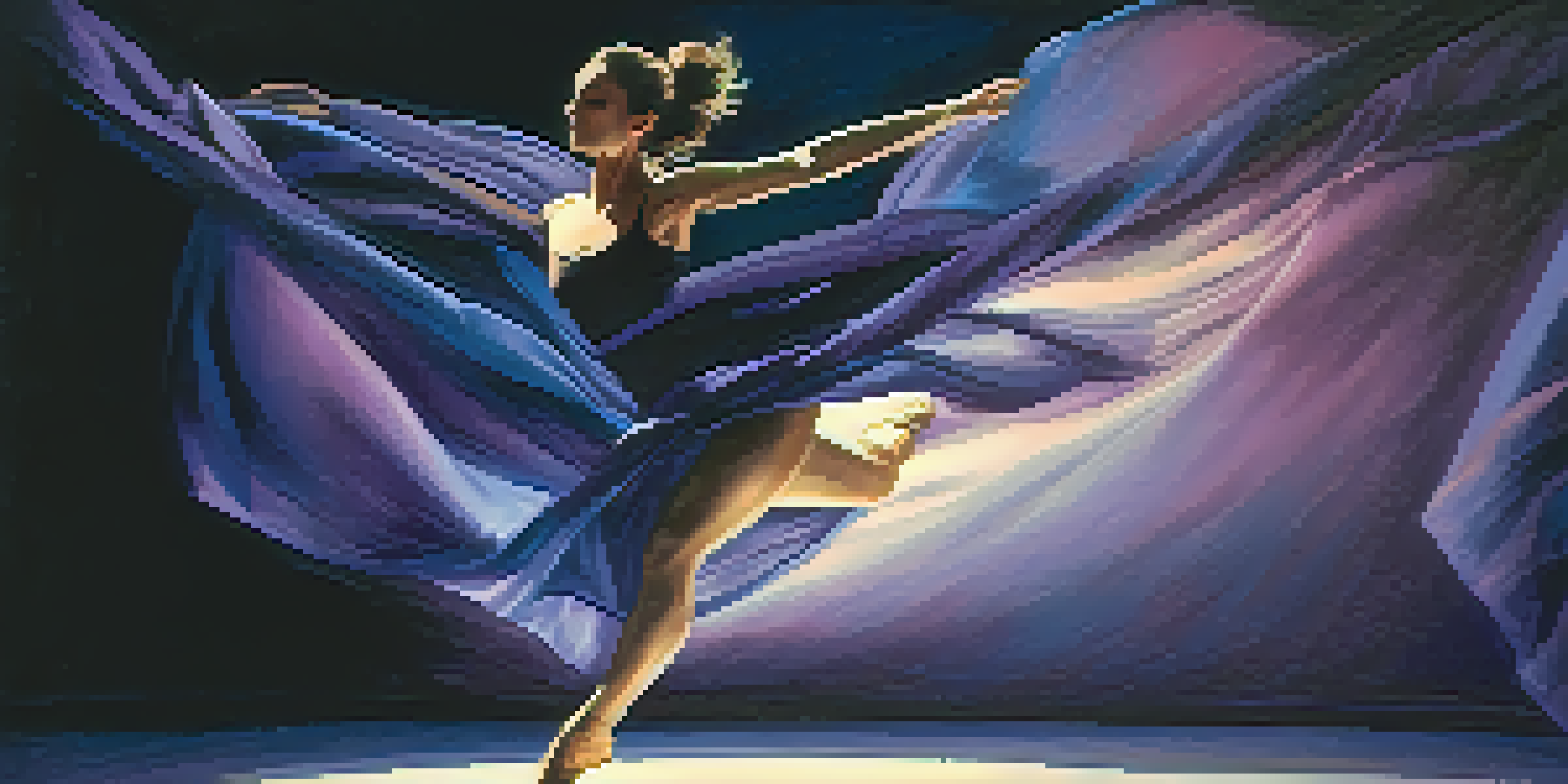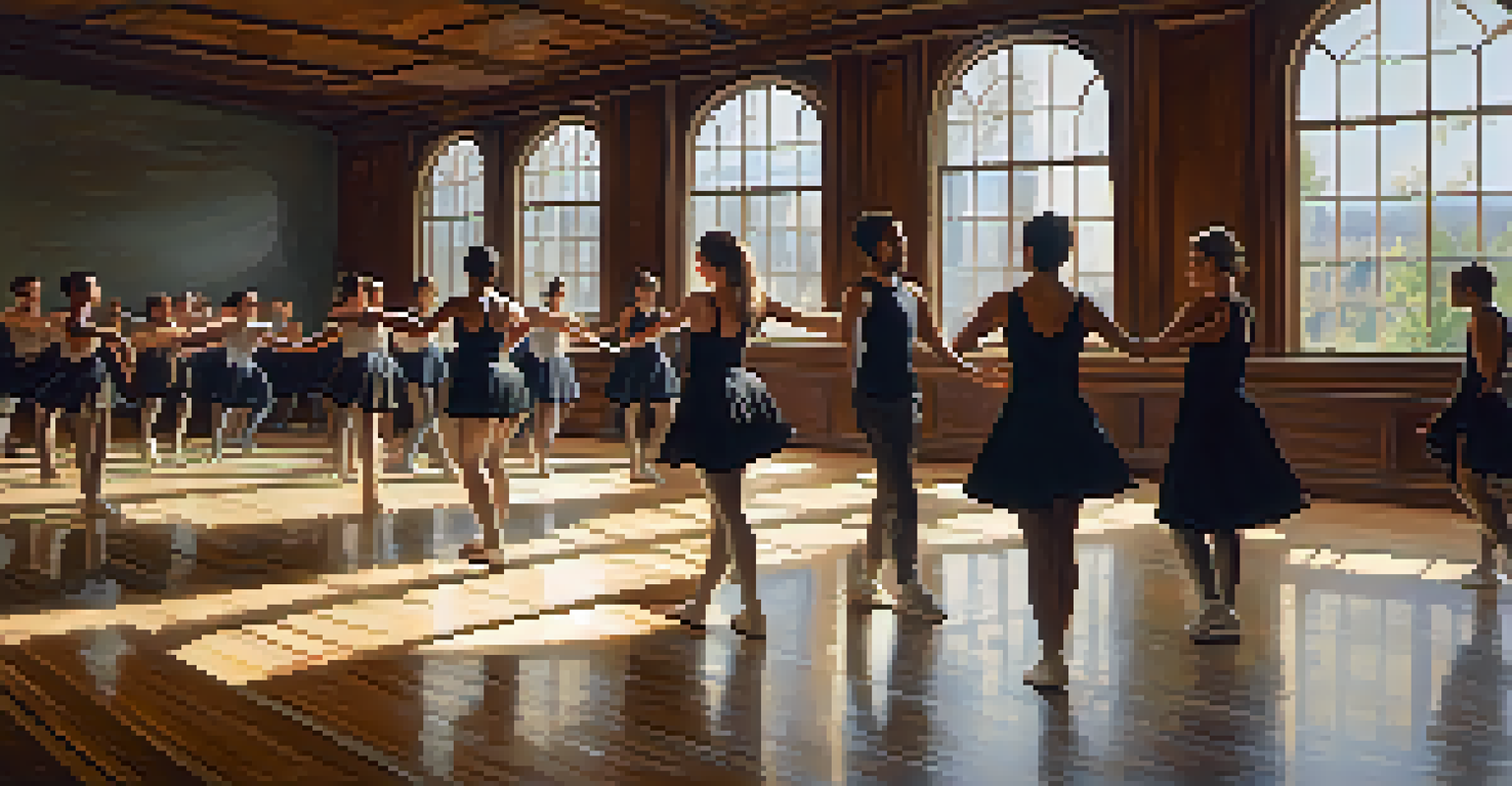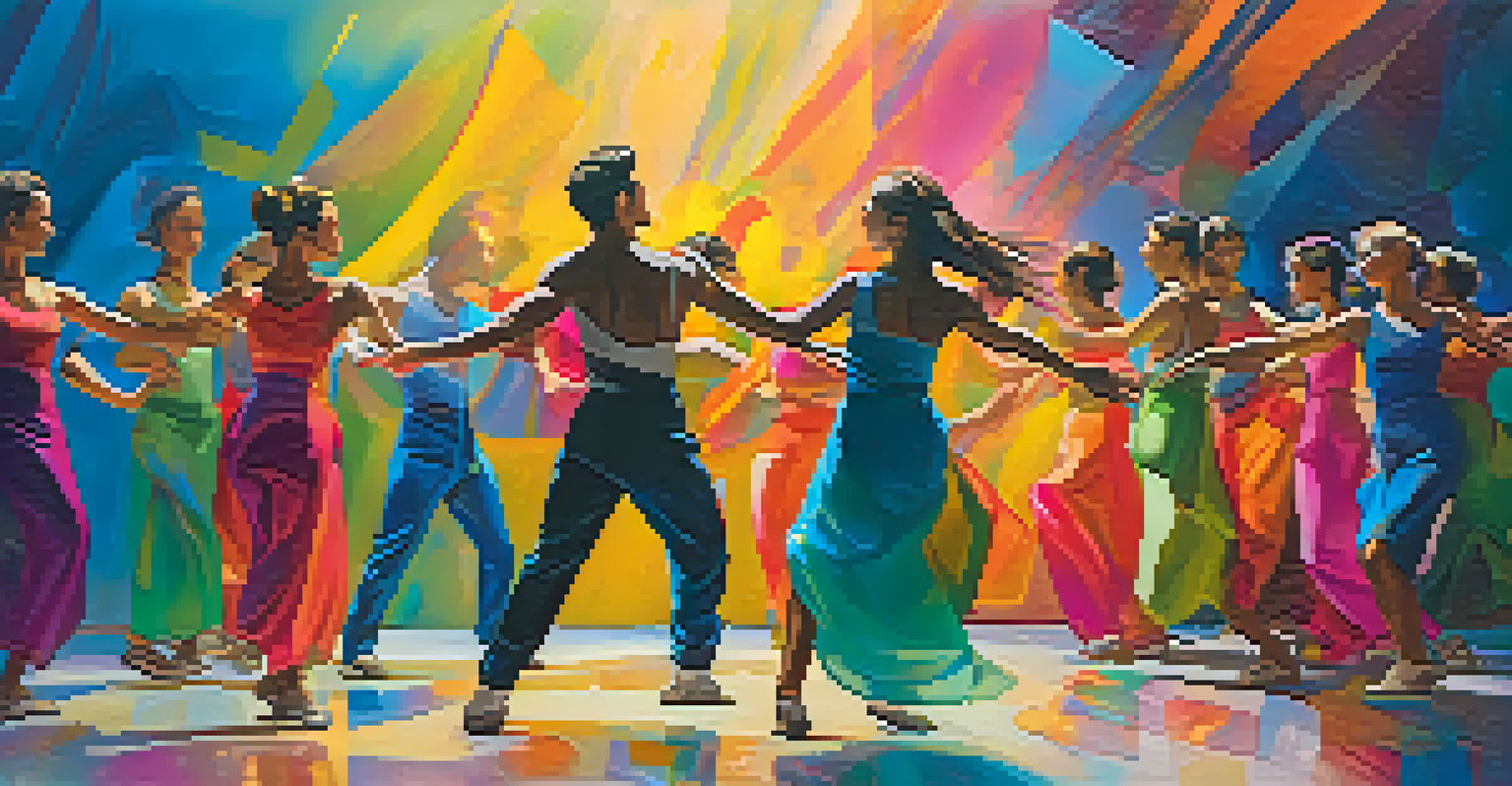Translating Emotions into Choreography: The Dance Creation Process

Understanding the Emotional Landscape in Dance
Dance is a powerful medium for expressing emotions, transforming feelings into movement. Each dancer brings their own emotional experiences, creating a unique canvas for choreography. This emotional landscape serves as the foundation for crafting a dance piece, as it allows the choreographer to tap into shared human experiences.
Dance is the hidden language of the soul.
Whether it's joy, sorrow, or anger, these feelings can evoke a visceral reaction from the audience. By understanding the emotional undertones, choreographers can create a narrative that resonates deeply. This connection between emotion and movement is what makes dance compelling and relatable.
Ultimately, the exploration of emotions in dance not only guides the choreography but also enriches the performance. It invites both dancers and audiences to engage in a shared experience, making the act of dancing a dialogue rather than a monologue.
Inspiration: Drawing from Personal and Collective Experiences
Inspiration for choreography often stems from personal experiences or collective societal narratives. A choreographer might reflect on a significant life event, using it as a springboard for movement. This personal touch infuses the dance with authenticity, allowing audiences to connect on a deeper level.

Similarly, collective experiences, such as cultural heritage or social movements, can inspire choreography. These themes resonate with broader audiences, creating a shared understanding through dance. By weaving in these elements, choreographers can highlight universal emotions and stories.
Emotions Drive Dance Creation
Choreographers harness personal and collective emotions to create authentic and relatable dance pieces.
Ultimately, inspiration serves as the catalyst for the creative process, guiding the choreographer toward a vision. It's often said that great art reflects life, and in dance, this reflection can foster empathy and understanding among viewers.
Choosing Movement Vocabulary to Convey Feelings
The selection of movement vocabulary is crucial in translating emotions into choreography. Each gesture, step, and formation carries its own emotional weight, and choreographers must choose wisely to convey their intended message. For example, sharp, quick movements might express anger, while fluid, flowing motions could signify love and tenderness.
To watch us dance is to hear our hearts speak.
Understanding the subtleties of body language and movement dynamics allows choreographers to articulate emotions effectively. This vocabulary becomes a visual language, communicating feelings that words often cannot. The choreography, then, becomes a storytelling medium that speaks directly to the audience’s heart.
Moreover, varied movement styles can enhance emotional expression. A fusion of ballet's grace with hip-hop's intensity can create a rich tapestry of feelings, offering a more nuanced performance. This blend invites viewers to experience a spectrum of emotions in a single dance piece.
Creating a Narrative: Weaving Emotions into a Story
A strong narrative can elevate a dance performance, making emotions more palpable. Choreographers often construct a storyline that reflects the emotional journey they wish to convey. This narrative thread guides the audience through the highs and lows of the emotions expressed, creating an immersive experience.
By structuring the choreography around a clear emotional arc, choreographers can evoke empathy and connection. Just as a good book or film draws you in, a well-crafted dance narrative captivates the audience, allowing them to feel and reflect on their own emotions. The choreography becomes a mirror reflecting shared human experiences.
Movement Speaks Volumes
The choice of movement vocabulary is essential in conveying specific emotions, transforming choreography into a visual language.
Incorporating elements like character development and dramatic climaxes can enhance this emotional storytelling. As dancers embody their roles, they invite the audience to join them on this emotional ride, making each performance a unique experience.
Collaboration: Merging Ideas to Enrich Choreography
Collaboration is a vital aspect of the dance creation process, bringing together diverse perspectives. When choreographers work with dancers, musicians, and visual artists, the result is often a richer, more textured performance. Each collaborator contributes their unique insight, enhancing the emotional depth of the choreography.
This team effort can result in innovative movement and unexpected emotional expressions. For instance, a dancer's interpretation of a movement might inspire a new emotional direction for the piece. This organic exchange of ideas fosters creativity and pushes the boundaries of traditional choreography.
Moreover, collaboration can deepen the emotional impact on stage. When artists unite their talents, the synergy creates a powerful atmosphere that resonates with the audience. This collective energy amplifies the emotional experience, making it unforgettable.
Rehearsal: Refining Emotions Through Practice
Rehearsal is where the magic happens, as dancers refine their movements and emotional expressions. This stage of the creative process is essential for translating raw emotion into polished choreography. Through repetition, dancers learn to embody the feelings they wish to convey, allowing them to move seamlessly on stage.
During rehearsals, choreographers can provide feedback, guiding dancers to explore and deepen their emotional performances. This iterative process can lead to breakthroughs, where a dancer discovers a new layer of emotion within a movement. It's a journey of growth for both the dancers and the choreographer.
Collaboration Enhances Performance
Working with diverse artists enriches choreography, deepening emotional expression and fostering creativity.
Furthermore, rehearsing in front of an audience, even if just a small one, can offer valuable insights. This live feedback helps gauge emotional resonance and refine the performance further. Ultimately, rehearsal transforms preliminary ideas into a cohesive and expressive dance piece.
The Final Performance: Sharing Emotions with the Audience
The final performance is the culmination of the entire creative process, where emotions are shared live with the audience. This moment is exhilarating for both dancers and choreographers, as they showcase their hard work and emotional investment. The energy in the room can be palpable, creating a unique bond between performers and viewers.
As dancers take the stage, their emotions come to life through movement, inviting the audience to feel alongside them. This shared experience allows viewers to connect with their own emotions, making the performance resonate long after the final curtain call. It's a powerful reminder of the universal nature of feelings.

In essence, the performance is not just about showcasing technical skill; it's about storytelling and emotional connection. It invites the audience to embark on an emotional journey, proving that dance is a profound form of communication and expression.